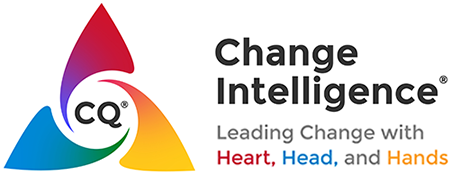A fundamental part of understanding CQ is understanding which type of change leader you are—a Coach, a Visionary, an Executer, a Champion, a Driver, a Facilitator, or an Adapter, each of which indicates a different mix of leading with Head, Heart, or Hands. When they learn about these types, most of my clients ask me the same question, and it’s a good one: “What blend of change leader styles is best to have on a team? Is there an ideal team profile?”
In the short term, a particular team profile may be most appropriate to address a specific need. A Driver team (strong on Head and Hands) would be invaluable for a high- intensity, make-it-or-break-it turnaround. A Champion team (favoring Head and Heart capabilities) would be particularly adept at rallying an organization around a radically new vision. A Facilitator team (skilled at Heart and Hands) would be of great assistance in implementing a complex new technology on the front lines.
Just as there is no ideal individual profile, there is ultimately no ideal team profile. Success lies in how aware the team is of its CQ blend and what it does to leverage it. Just as the best change leaders are enlightened by knowledge of their style, their strengths, and their blind spots, so it is for the ideal team.
My longest-standing co-facilitator and I are the opposite styles. I’m a Champion, and he’s an Executer. When we first met, it was like we were speaking two different languages, and I couldn’t get where he was coming from half the time. However, we both trusted and respected each other. As we learned each other’s styles, we began to value and appreciate what each other brought to the table.
Over the years, the two of us have led many change projects together. Invariably, he owns the project plan—and mercifully so! His spreadsheets boast multiple worksheets, many tabs, and an abundance of color. Every i dotted and t crossed. I, on the other hand, tend to take the lead with facilitating project meetings. That said, his more detail-oriented and unemotional style can play better with technically oriented types. We are each a good balance to the other. Clients get the benefit of both our styles, our different perspectives and provocative viewpoints, and our complementary skill sets.
It’s not necessarily that Champions and Executers are natural-born partners; the benefit comes from my co-facilitator and I exploring our own brand of change intelligence and using our awareness of each other’s predispositions and working styles to collaborate effectively.
One caveat as you apply CQ to your team: Be sure that you don’t dump all responsibility on certain individuals because the work seems suited to their CQ style. Don’t assume that just because you’re the Visionary, you’ll always own the strategy. Don’t assume that because you’re the Coach, all the people dynamics fall on your plate. Don’t dump all the minutiae of project planning on the Executer or have the Champion make all the executive presentations. Don’t expect the Facilitator to run every team meeting or the Driver to kick butt and take names when things go awry. That’s stereotyping. We each have a profile, but “profiling” is forbidden!
Teams charged with leading change together can reap great benefits from exploring their collective change intelligence. Here are some questions to spark dialogue and new working agreements for future success.
- What is our team’s value to the organization, particularly with respect to leading change?
- Is our team operating as effectively as it could be?
- If not, why not? Can a deficit of CQ explain any of these reasons?
- How can we apply our knowledge of CQ to improve our team’s effectiveness?
- How are we leading change effectively? What are the positive things happening in our current change project?
- How can the CQ System help us understand the ways we aren’t leading change effectively? What are the negative aspects of our current change project?
- Is there a previous change project we can learn from—one we can dissect and interpret in light of what we now know about CQ? Can we create agreements among the team based on these insights and then carry them forth into the future?
- What is our team’s overall change leader style? Given that, at what aspects of leading change do we predict our team will excel? What are our team’s strengths?
- What aspect of CQ (Heart, Head, or Hands) is our team lowest in? Which team member (or members) provides a complementary perspective that can help the team overcome its blind spots? What contributions can specific team members make to increase the effectiveness and positive impact of the team’s actions?
- Taken together, what are action steps for us to build our CQ as a team to lead powerful, positive change?
By the end of this discussion, the team will have reached a consensus on how to improve relationships and roles within the team and will have made new agreements on how best to enhance processes and results.
Periodically, bring the team back together to review its progress, make any necessary course corrections, and celebrate its successes!
